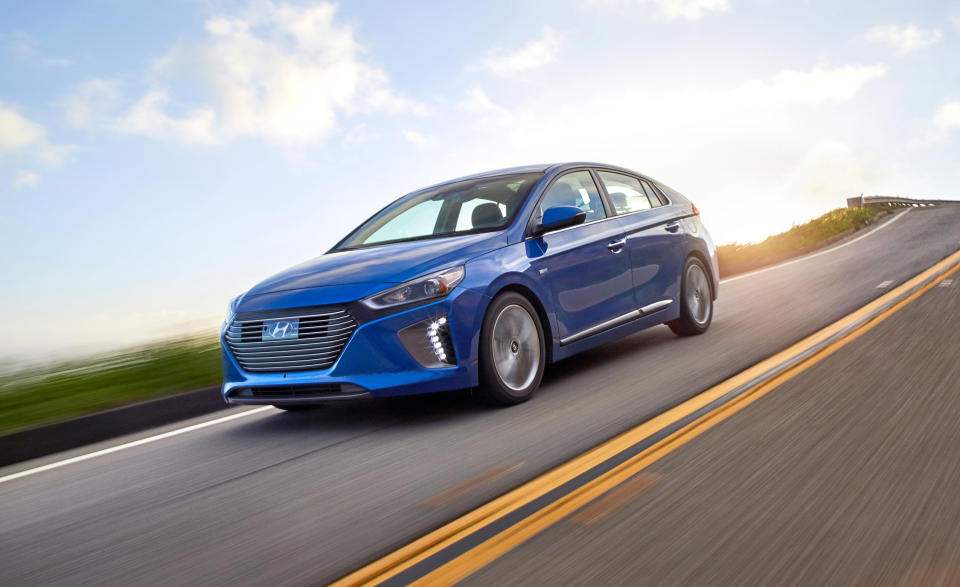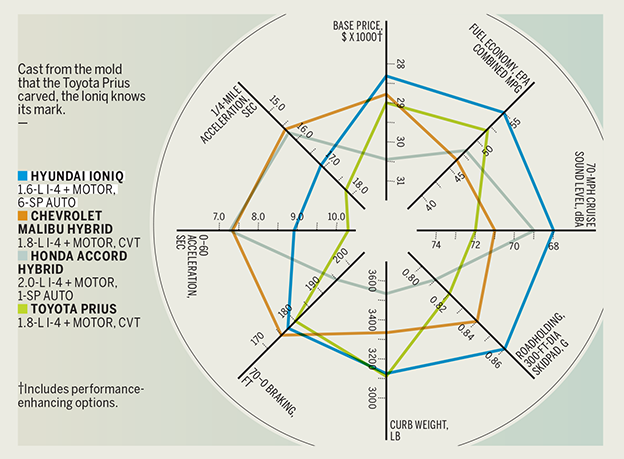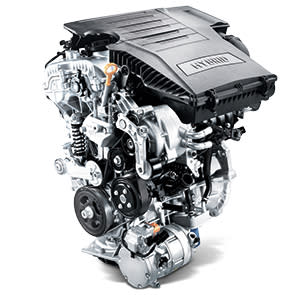2017 Hyundai Ioniq Hybrid

From the May 2017 issue
Hyundai doesn’t just want to be Toyota, it wants to break Toyota, in part by relentlessly copying the Big T’s jiujitsu. Toyota created the mass-market hybrid, and it’s pretty much had the corner on it, as others chipped futilely at Fortress Prius with unworthy competitors, including the failed Honda Insight, or shied away from hybrids altogether.
Yet, even as soft fuel prices have partially deflated the eco-car business over the past year, Hyundai sees opportunity, both in newfangled ride-sharing fleets where the break-even point on a hybrid is easily reached, and in up-and-coming millennials. They will represent 40 percent of new-car buy-ers by 2020. And as long as these young’uns stay the course with their values as they age (just like the baby boomers, cough), including a preference for urban living and smaller electrified vehicles, a parade of bearded and plaid-wearing buyers could march right into Hyundai’s open arms.

For this evaluation, we drove like a normal person might. Were it our car, we would leave it in sport mode.
The powertrain switches from electric to gas to combined thrust mostly transparently, though the occasional driveline jerk slips through as the electric motor/generator and six-speed seem to fall out of sync. The car also takes its time shifting between drive and reverse, and unless you hold the brake, it may even roll downhill a bit while its computers do the math and move the levers. The regenerative braking is fairly mild and there’s no max-regen mode as in the plug-in Ioniq or Prius or Chevy Volt, probably because the Ioniq hybrid’s battery capacity is too small to really benefit from it. Thus, you can’t “one-pedal” the Ioniq.
You get limited data about mileage performance, including a percentage breakdown that classifies your driving as either “economical,” “normal,” or “aggressive.” When we calculated our 45-mpg test average, that display showed 49 percent, 42 percent, and 9 percent, respectively, a seemingly normal spread, lest you believe our usual lead feet are what caused the test average to fall well short of the 55-mpg EPA combined rating for our Limited-trim test car. We might have done better if the Ioniq rewarded its handlers for stingier driving through the display, as the Ford C-Max does with its ever-growing leafy vines. That kind of digital pellet-drop can get the mice working harder to excel in the experiment, but the Ioniq offers no such rewards.
Actually, real-world fuel economy in the mid-40s is par for this class. The Prius delivered 42 mpg and 44 mpg on its 54-city/50-highway rating in two separate tests. Hybrids in general shine especially brightly in the EPA’s tests, and the Ioniq appears to be no exception. Whether Hyundai’s hoped-for social changes mean it’ll shine in the showroom is another question, but ride-share drivers wanting only the lowest-priced and most efficient potato will surely come calling, and that’s a start.
Competitors

Explained: The Finer Points of Gas-Engine Efficiency

Hybrid efficiency is far more complex than pairing an electric motor/generator with a gas engine. The Ioniq’s Atkinson-cycle 1.6-liter inline-four optimizes the miles from every gallon of gas thanks to efficiency-boosting measures such as its water-cooled exhaust-gas-recirculation system. With lower EGR temperatures, the Ioniq’s Kappa engine can fill each cylinder with as much as 20 percent exhaust gas during the intake stroke. The typical uncooled EGR system displaces only 10 percent of the fresh-air charge. Hyundai claims that this difference alone is good for a 3 percent fuel-economy benefit by reducing the engine’s pumping losses.
The engine cooling system uses a split-circuit design to modulate the temperatures of the head and block separately. The control logic opens the cylinder head thermostat at 190 degrees, while coolant starts flowing to the block at 221 degrees. The higher block temperature decreases the viscosity of the oil, reducing friction. Lower cylinder-head temperatures help prevent knock, allowing Hyundai to use a high 13.0:1 compression ratio and more-advanced ignition timing. The engine’s Atkinson-cycle operation further reduces pumping losses with an expansion stroke effectively longer than its compression stroke. The net result is a claimed 40 percent thermal efficiency for the internal-combustion side of Hyundai’s gasoline-electric powertrain. —Eric Tingwall
Specifications >
VEHICLE TYPE: front-engine, front-motor, front-wheel-drive, 5-passenger, 4-door hatchback
PRICE AS TESTED: $31,460 (base price: $28,335)
ENGINE TYPE: DOHC 16-valve Atkinson-cycle inline-4, permanent-magnet synchronous AC motor/generator, 1.6-kWh lithium-ion battery pack
Displacement: 96 cu in, 1580 cc
Power: 104 hp @ 5700 rpm
Torque: 109 lb-ft @ 4000 rpm
MOTOR: synchronous permanent-magnet AC
Power: 43 hp
Torque: 125 lb-ft
Net system power: 139 hp
Net system torque: 195 lb-ft
TRANSMISSION: 6-speed dual-clutch automatic with manual shifting mode
DIMENSIONS:
Wheelbase: 106.3 in
Length: 176.0 in
Width: 71.7 in Height: 56.9 in
Passenger volume: 94 cu ft
Cargo volume: 27 cu ft
Curb weight: 3173 lb
C/D TEST RESULTS:
Zero to 60 mph: 8.9 sec
Zero to 100 mph: 26.6 sec
Zero to 110 mph: 37.0 sec
Rolling start, 5–60 mph: 9.0 sec
Top gear, 30–50 mph: 4.7 sec
Top gear, 50–70 mph: 6.4 sec
Standing ¼-mile: 16.9 sec @ 82 mph
Top speed (governor limited): 116 mph
Braking, 70–0 mph: 177 ft
Roadholding, 300-ft-dia skidpad: 0.86 g
FUEL ECONOMY:
EPA combined/city/hwy: 55/55/54 mpg
C/D observed: 45 mpg

 Yahoo Autos
Yahoo Autos 